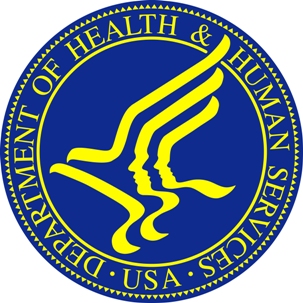


To Schools of Medicine, Schools of Dentistry, Schools of Nursing, and other Health-Related Schools:
We write on behalf of the Department of Justice, the Department of Health and Human Services, and the Department of Education to update you on the latest recommendations from the Centers for Disease Control and Prevention (CDC) regarding the participation of students with hepatitis B in medical, dental, nursing, and other health-related programs. We also take this opportunity to emphasize the importance of these recommendations, especially as they relate to your institution's nondiscrimination obligations under the Americans with Disabilities Act of 1990 (ADA), Section 504 of the Rehabilitation Act of 1973 (Section 504), and Title VI of the Civil Rights Act of 1964 (Title VI).
Approximately 800,000 to 1.4 million people in the United States have hepatitis B. 1 In its updated recommendations, the CDC notes several recent instances in which persons with hepatitis B "have been threatened with dismissal or actually dismissed from surgical practice on the basis of their [hepatitis B virus] infection, and others have had their acceptances to medical or dental schools rescinded or deferred because of their infection." 2 Moreover, the Department of Justice and the Department of Health and Human Services have received, and are currently investigating, complaints against medical and dental schools around the country for allegedly discriminating against students and applicants with hepatitis B in violation of the ADA. In fact, the Department of Justice recently entered into a settlement agreement with a medical school and a school of osteopathic medicine resolving allegations that the schools violated the ADA by excluding previously accepted applicants with hepatitis B from their programs. The settlement agreement requires the schools to undertake several actions, including the following: adopt a hepatitis B policy that is consistent with the CDC's updated recommendations; provide ADA training to their employees; permit the applicants to enroll in the schools; and provide the applicants with a total of $75,000 in compensation and tuition credits. In light of this, the Departments of Justice, Health and Human Services, and Education are concerned that some health-related schools may be making enrollment decisions based on an incorrect understanding of the hepatitis B virus, resulting in unlawful discrimination.
The Departments of Justice, Health and Human Services, and Education share responsibility for protecting the rights of students and applicants with disabilities, including those who have hepatitis B, in medical, dental, nursing, and other health-related education programs.
Under Title III of the ADA, a private school may not discriminate against individuals with disabilities, in the full and equal enjoyment of the goods, services, facilities, privileges, advantages, or accommodations offered by that school. 3 Similarly, Title II of the ADA prohibits public schools, including public postsecondary institutions, from discriminating on the basis of disability in their services, programs, or activities. 4 Section 504 likewise prohibits education programs and activities, including those at the postsecondary level, that receive federal financial assistance from discriminating on the basis of disability with respect to admission to or participation in their programs and activities. 5 In addition, Title II and Title III of the ADA and Section 504 prohibit covered entities from using criteria or methods of administration that have the effect of discriminating against people with disabilities. 6 The ADA and Section 504 also require covered entities to make reasonable modifications to their policies, practices, or procedures when necessary to avoid discrimination on the basis of disability, unless such modifications would fundamentally alter the nature of the program or the services provided. 7
Although federal civil rights laws broadly prohibit discrimination on the basis of disability, those laws do not require schools of higher education to permit an individual with a disability to participate in particular activities if doing so would pose a direct threat to the health or safety of others. 8 In determining whether an individual poses a direct threat to the health or safety of others, schools must make an individualized assessment, based on a reasonable judgment that relies on current medical knowledge or on the best available objective evidence, to ascertain (1) the nature, duration, and severity of the risk, (2) the probability that the potential injury will actually occur, and (3) whether reasonable modifications of policies, practices, or procedures will mitigate the risk. 9
In addition to the ADA and Section 504, the management of students and applicants with hepatitis B may also implicate Title VI, which prohibits discrimination on the basis of race, color, or national origin in programs and activities receiving federal financial assistance. 10 One way in which specific policies or practices used in the management of students with hepatitis B may result in unlawful discrimination is if such policies have an unjustified disparate impact on particular students. 11 This means that a policy or practice that is neutral on its face – the policy itself does not mention race, color, or national origin – but has a disproportionate and unjustified effect on students of a particular race, color, or national origin, may result in unlawful discrimination under Title VI. Statistical disparities may be evidence that a policy or practice has an adverse discriminatory impact and should be reviewed to ensure compliance with Title VI. It is notable that while Asians, Native Hawaiians, and Pacific Islanders make up roughly 4.5 percent of the U.S. population, they represent 50 percent of the persons with hepatitis B in the United States. 12 With this in mind, institutions of higher education should be aware that Title VI applies to the extent that specific policies, practices, or procedures regarding hepatitis B discriminate, or have the effect of discriminating, against students or applicants of a particular race, color, or national origin. 13
On July 6, 2012, the Centers for Disease Control and Prevention (CDC) published the Updated CDC Recommendations for the Management of Hepatitis B Virus-Infected Health-Care Providers and Students. 14 With respect to students with hepatitis B, CDC's updated recommendations aim to promote patient safety while providing risk management and practice guidance to students and health-care providers with hepatitis B.
Among other things, the CDC provides the following new recommendations for the management of students who have hepatitis B:
- Chronic hepatitis B virus infection, in itself, should not preclude the study or practice of medicine, surgery, dentistry, or allied health professions.
- Practices that restrict students from the study of medicine, dentistry, or surgery – such as prenotification to patients of the hepatitis B status of their health-care provider – should be discouraged.
- Medical and dental students with chronic hepatitis B virus infection (i.e., those who are HBsAg-positive) who do not perform exposure-prone invasive procedures but who practice non- or minimally invasive procedures should not be subject to any restrictions of their activities or study.
- While medical and dental students with chronic hepatitis B virus infection may have restrictions imposed on their participation in exposure-prone invasive procedures, 15 exposure-prone invasive procedures are not ordinarily performed by students fulfilling the essential functions of a medical or dental school education.
- Standard precautions should be rigorously adhered to in all health-care settings.
The CDC recommends that DNA serum levels be relied on, rather than hepatitis B e-antigen status, to monitor infectivity and states that individuals with hepatitis B can conduct exposure-prone invasive procedures if a low or undetectable hepatitis B viral load is documented by regular testing at least every six months. The CDC also recommends that a hepatitis B viral level of 1,000 IU/ml (5,000 GE/ml) or its equivalent is an appropriate viral load threshold for a review panel to adopt. The CDC stresses that for most students with chronic hepatitis B "who conform to current standards for infection control, [hepatitis B virus] infection status alone does not require any curtailing of their . . . supervised learning experiences" because those experiences generally do not include exposure-prone invasive procedures. In fact, the CDC noted that since its last update in 1991, there have been no reports of hepatitis B transmission in the United States or other developed countries from "medical or dental students . . . or any others who would not normally perform exposure-prone invasive procedures". 16
The CDC's updated recommendations provide current medical information about managing students in health-related schools who have hepatitis B. Consistent with Supreme Court decisions, the Departments of Justice, Education, and Health and Human Services place considerable weight on such guidance when analyzing whether there has been a violation of the ADA, Section 504, or Title VI 17 . While such guidance is not conclusive with respect to determining an entity's civil rights obligations, an entity must have a valid justification for deviating from the guidance, or the entity risks a finding that it has violated its obligations. 18 We strongly urge you to review your policies, practices, and procedures regarding students and applicants with hepatitis B in light of the CDC's updated recommendations and to ensure that your institution is complying with its nondiscrimination obligations under the ADA, Section 504, and Title VI.
We would like to work with you to ensure full compliance with these federal laws.
- The Department of Justice operates a toll-free, technical assistance line to answer questions about the requirements of the ADA. For technical assistance, please call (800) 514-0301 (voice) or (800) 514-0383 (TTY). Specialists are available Monday through Friday from 9:30 a.m. until 5:30 p.m. (Eastern Time) except Thursday, when the hours of operation are 12:30 p.m. to 5:30 p.m. All calls are confidential.
- The Office for Civil Rights in the Department of Health and Human Services provides technical assistance about the requirements of Section 504 and Title VI in programs and activities to which it provides federal financial assistance and about the requirements of Title II of the ADA relating to the provision of health care and social services, including schools of medicine, dentistry, nursing, and other health-related schools. For technical assistance, contact information is available at www.hhs.gov/ocr; you may also call toll-free: (800) 368-1019 (voice) or (800) 537-7697 (TDD).
- The Office for Civil Rights in the Department of Education provides technical assistance about the requirements of Section 504 and Title VI in programs and activities to which it provides federal financial assistance. For technical assistance, you may contact the regional office serving your state. You may locate that office at http://wdcrobcolp01.ed.gov/CFAPPS/OCR/contactus.cfm, by e-mailing OCR@ed.gov, or by calling 800-421-3481 or 800-877-8339 (TDD).
We appreciate your attention to this important civil rights issue and look forward to working with you to ensure that our nation's health-related schools afford all students and applicants with disabilities, including those with hepatitis B, the opportunity to apply, enroll, and fully participate in the schools' programs without discrimination on the basis of disability in a manner that is consistent with the advice provided above.
Sincerely,

Jocelyn Samuels
Principal Deputy Assistant Attorney General
Civil Rights Division
U.S. Department of Justice

Seth Galanter
Acting Assistant Secretary
Office for Civil Rights
U.S. Department of Education

Leon Rodriguez
Director
Office for Civil Rights
U.S. Department of Health and Human Services
1 Institute of Medicine, Hepatitis and Liver Cancer: A National Strategy for Prevention and Control of Hepatitis B and C, Washington, DC: The National Academies Press (2010), 25.
2 Centers for Disease Control and Prevention, Updated CDC Recommendations for the Management of Hepatitis B Virus–Infected Health-Care Providers and Students, Morbidity and Mortality Weekly Report, Vol. 61, No. 3, 4 (2012), available at www.cdc.gov/mmwr/pdf/rr/rr6103.pdf.
3 42 U.S.C. § 12182(a).
4 42 U.S.C. § 12132; 28 C.F.R. § 35.130.
5 34 C.F.R. §§ 104.42 and 104.43; 45 C.F.R. §§ 84.42 and 84.43.
6 42 U.S.C. § 12182(b)(1)(DD); 28 C.F.R. § 35.130(b)(3); 34 C.F.R. § 104.4(b)(4); 45 C.F.R § 84.4(b)(4).
7 28 C.F.R. § 36.302; 28 C.F.R. § 35.130(b)(7); 34 C.F.R. § 104.44(a); 45 C.F.R. § 84.44(a).
8 See 28 C.F.R. § 36.208; 28 C.F.R. 35.139; see also School Bd. of Nassau Cnty. v. Arline, 480 U.S. 273, 287 (1987) (interpreting Section 504 to protect individuals with disabilities from “deprivations based on prejudice, stereotypes, or unfounded fear, while giving appropriate weight to such legitimate concerns of grantees as avoiding exposing others to significant health and safety risks.”); cf. 29 U.S.C. § 705(20)(D) (for purposes of Section 504 as applied to employment, excluding from the definition of “individual with a disability” an individual “who has a currently contagious disease or infection and who, by reason of such disease or infection, would constitute a direct threat to the health or safety of other individuals”).
9 28 C.F.R. § 36.208; 28 C.F.R. 35.139; Arline, 480 U.S. at 288.
10 See 42 U.S.C. § 2000d-1 (authorizing federal agencies to effectuate the provisions of Title VI “by issuing rules, regulations, or orders of general applicability” to achieve the statute’s objectives); 45 C.F.R. § 80.3(b)(2) (Dep’t of Health & Human Servs.); 34 C.F.R. § 100.3(b)(2) (Dep’t of Educ.); 28 C.F.R. § 42.104(b)(2) (Dep’t of Justice); see also Guardians Ass’n v. Civil Serv. Comm’n, 463 U.S. 582, 592 n.13 (1983) (White, J.) (following enactment of Title VI, “every Cabinet department and about 40 federal agencies adopted Title VI regulations prohibiting disparate-impact discrimination”).
11 The regulations implementing Title VI specifically prohibit criteria or methods of administration that have the effect of discriminating on the basis of race, color, or national origin. 45 C.F.R. § 80.3(b)(2); 34 C.F.R. § 100.3(b)(2); 28 C.F.R. § 42.104(b)(2). The Federal government has the authority and responsibility to enforce the disparate-impact regulations.
12 Supra note 1, at 27.
13 In addition to discrimination based on disparate impact, Title VI prohibits different treatment based on race, color or national origin.
14 These recommendations update the hepatitis B portion of the CDC’s 1991 Recommendations for Preventing Transmission of Human Immunodeficiency Virus and Hepatitis B Virus to Patients During Exposure-Prone Invasive Procedures, available at www.cdc.gov/mmwr/preview/mmwrhtml/00014845.htm.
15 CDC notes the challenges posed in defining exposure-prone invasive procedures that pose a risk for hepatitis B virus transmission and cautions against defining “exposure-prone procedures too broadly; the great majority of surgical and dental procedures have not been associated with the transmission of [hepatitis B virus].” CDC classifies exposure-prone invasive procedures as “limited to major abdominal, cardiothoracic, and orthopedic surgery, repair of major traumatic injuries, abdominal and vaginal hysterectomy, caesarean section, vaginal deliveries, and major oral or maxillofacial surgery (e.g., fracture reductions).”
16 CDC, , Updated CDC Recommendations for the Management of Hepatitis B Virus-Infected Health-Care Providers and Students, Morbidity and Mortality Weekly Report, Vol. 61, No. 3, 8 (2012).
17 See, e.g., Bragdon v. Abbott, 524 U.S. 624, 650 (1998) (noting that when conducting a direct threat analysis, “the views of public health authorities, such as the . . . CDC . . . are of special weight and authority”).
18 Id.